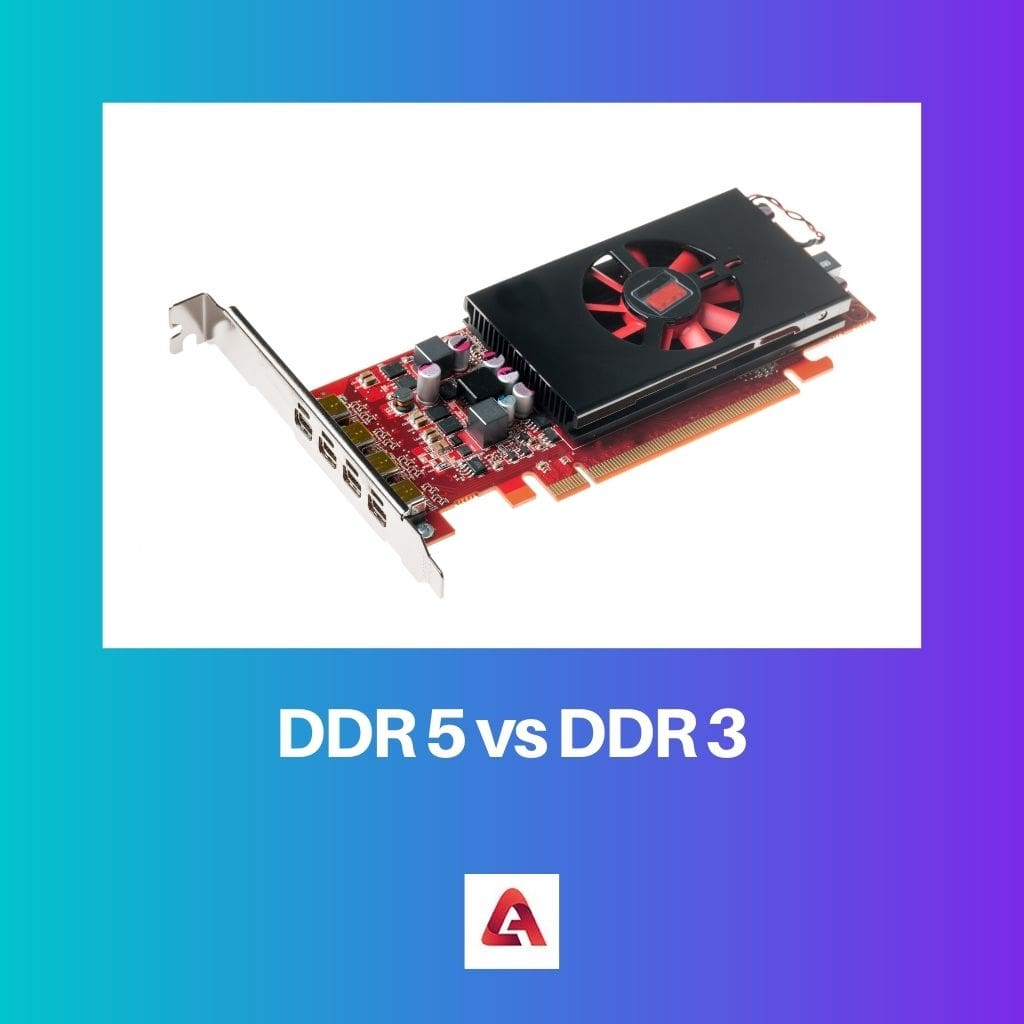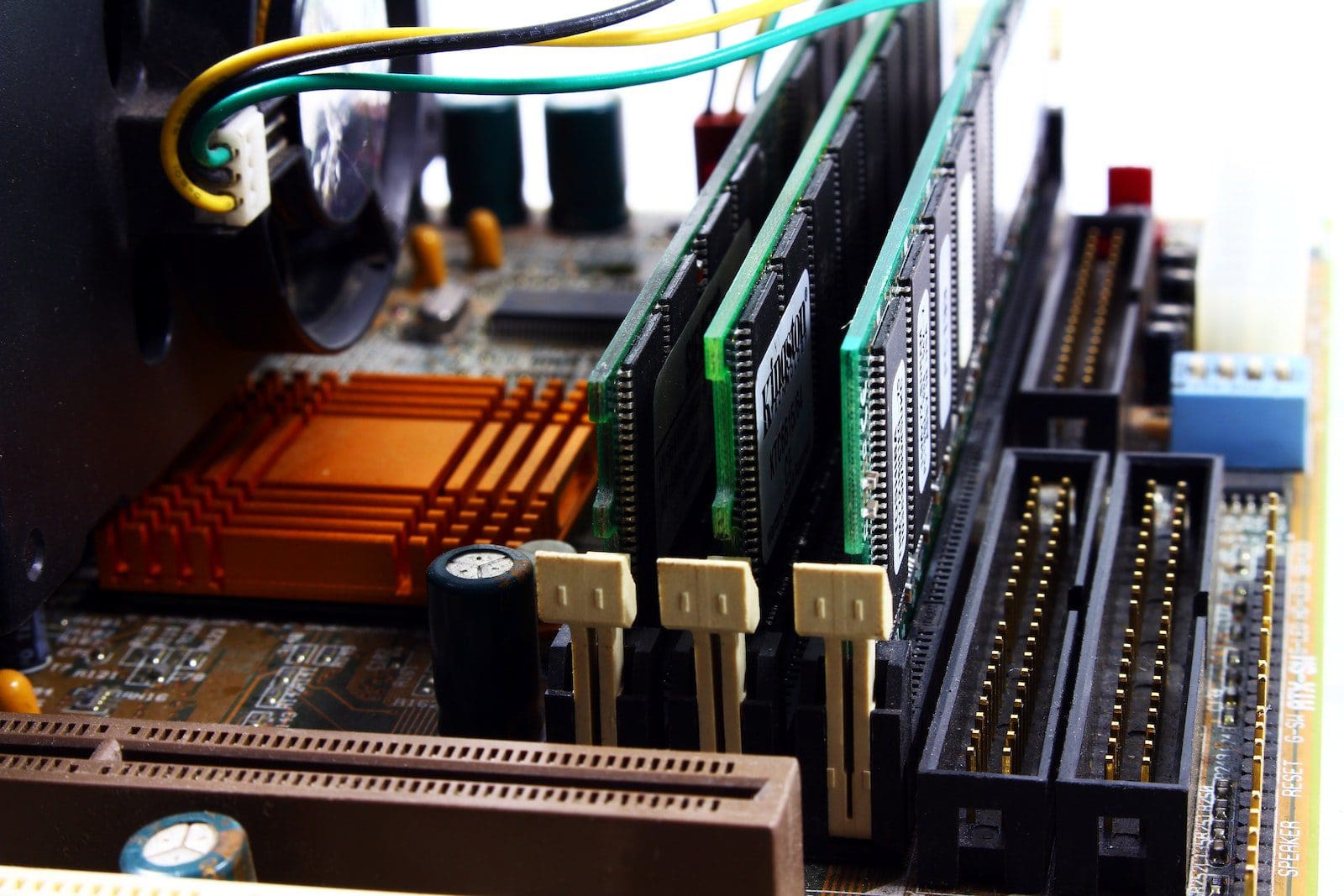With rising demands from technology, more has come to be expected from virtual realities. Graphics cards hold a pivotal position in this development.
Memory chips are no longer used to store data but more to enhance the functioning and speed of a computer program. Such Graphics cards have revolutionized the gaming scenario.
Key Takeaways
- DDR5 (Double Data Rate 5) is a newer generation of memory technology that provides faster data transfer rates, higher bandwidth, and improved power efficiency compared to DDR3.
- DDR3 (Double Data Rate 3) is an older memory technology with lower data transfer rates and less overall performance than DDR5.
- DDR5 and DDR3 are types of synchronous dynamic random-access memory (SDRAM), but DDR5 offers enhanced capabilities and performance, making it more suitable for modern computing applications.
DDR 5 vs DDR 3
The difference between DDR5 and DDR3 is that DDR5 has a much higher bandwidth than DDR3. Specifically, DDR 5 has 32 GB/s bandwidth, while DDR 3 has 17 GB/s bandwidth.

DDR5 is a cutting-edge technology and very new in the market, whereas DD3 has been around since 2007. The two have huge differences since DDR5 SDRAM-compatible motherboards are yet to be released.
Another crucial difference is that DDR 5 has a prefetch of 16n while DDR 3 has an 8n prefetch. Prefetch refers to prefetch architecture; the more prefetch buffer, the more efficiently the RAM performs.
Comparison Table
| Parameter of Comparison | DDR 5 | DDR 3 |
|---|---|---|
| Full form | Double Data Rate 5 Synchronous Dynamic Random-Access Memory | Double Data Rate Type 3 Synchronous Dynamic Random-Access Memory |
| Prefetch | 8/16n | 8n |
| Bandwidth | 51.2 GB/s | 17 GB/s |
| Voltage | 1.1 V | 1.3/1.5 V |
| Release Year | 2020 | 2007 |
What is DDR 5?
DDR5 not to be confused with GDDR5 is an abbreviation of Double Data Rate Type Five Synchronous Dynamic Random Access Memory or DDR5 SDRAM.
DDR5 was first developed by SK Hynix in 2018 and then updated to a 6400 MT/s chip version in February 2019. It was finally released on 14th July 2020 in the market.
DDR5 is designed to use less power than its predecessors and run on 1.1 voltages. While this is cutting-edge, there is still time before it is used for commercial purposes.
With such advanced technology, one can only expect the prices to be sky-high, and initially, incorporating them at the server level is only feasible.
DDR5 uses DFE (Decision Feedback Equalization), which enables input/output speed adaptability for a higher bandwidth of 51.2 GB/s, which this memory chip was primarily focused on.
Compared to its predecessors, DDR5, among many advanced features, boasts a prefetch of 6/18n and power-saving characteristics.
This prefetch buffer of 16n gives the fast edge to DDR5 since it capacitates the chip to read 16 units of data per second which is the most number of unit/s to be incorporated in a memory chip.

What is DDR 3?
DDR3 is a double data type Synchronous Dynamic Random Access Memory found in most client-level laptops and Personal Computers. This memory chip was first released in 2007 and has been extensively used for several client and server-level technologies.
It boasts double the transfer data rate than its immediate predecessor and is armed with a higher bandwidth and peak speed values.
DDR3 also boasts a higher prefetch buffer value than its predecessors with 8n prefetch. This means it can read 8 units of data per second and is 8 times faster than DDR2.
DDR3 has a bandwidth of 17 GB/s and runs on a voltage power of 1.3V to 1.5V. DDR3 was curated to transfer data twice as fast as DDR2 and transfers data at a rate of 800–2133 MT/s. However, it was replaced by DDR4 in the year 2014.
Although, in 2007, these bandwidths were only required by high-end graphics that required data transfer between framebuffers, soon they were being used for all computers and PCs for enhanced performance.
DDR3 was also made very different from its predecessor, DDR2, in shape to prevent accidental interchanges. DDR3 boasts a 240-pin DIMMS with square notches, whereas DDR2 has round notches that make them visibly different.

Main Differences Between DDR 5 and DDR 3
- The main difference between DDR5 and DDR3 is that DDR 5 has higher bandwidth than DDR3, for DDR 5 has 32 GB/s bandwidth while DDR 3 has 17 GB/s bandwidth.
- DDR5 has a prefetch of 16n while DDR3 has an 8n prefetch which means DDR5 can transfer data at twice the rate of DDR3.
- DDR5 is designed to use less power than its predecessors and runs on 1.1 voltages, while DDR3 runs on a voltage power of 1.3V to 1.5V.
- DDR5 was first developed by SK Hynix in 2018 and then updated to a 6400 MT/s chip version in February 2019, whereas DDR3 was first released in 2007.
- DDR5 is cutting edge, and there is still time before it is used for commercial purposes, while DDR3 has been extensively used for several client and server-level technologies.





